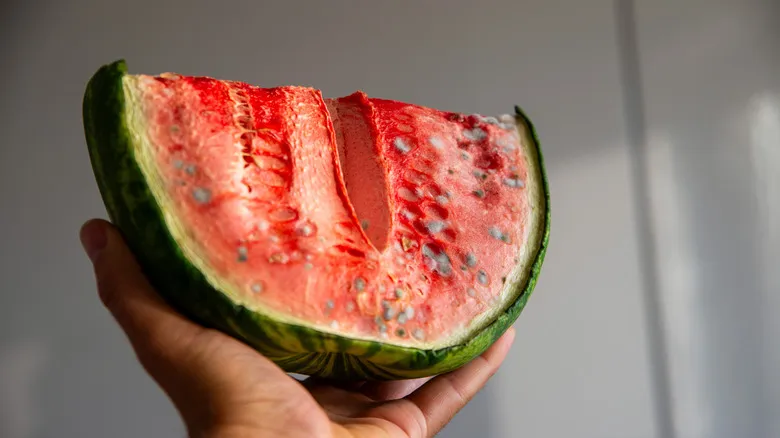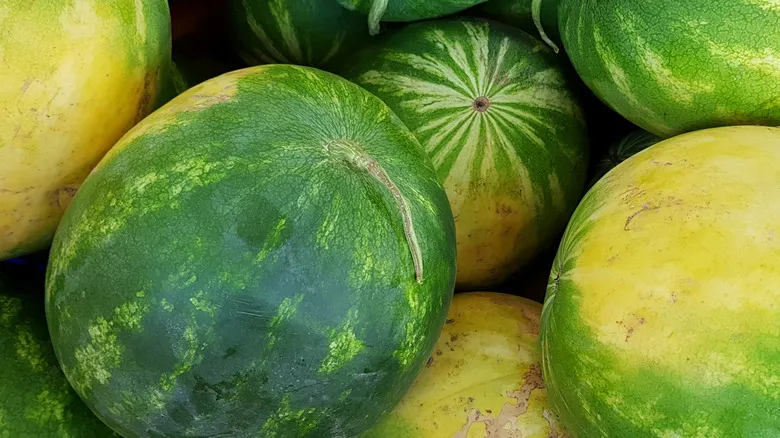Use all your senses to tell when watermelon is bad

Even though many shelf-stable foods have best-by and expiration dates, these are often more of a suggestion than strict rules. When it comes to fresh produce, determining the exact point at which it spoils can be even more challenging. In such situations, using your common sense and relying on your sight, smell, and touch will be essential for distinguishing between fresh and spoiled items.
Typically, a freshly cut watermelon can last about five days in the refrigerator. Despite its thick, tough rind that seems nearly impervious, it's still important to follow safe preparation and storage practices. For instance, always wash the exterior before cutting into it, and ensure that any cut watermelon is kept chilled. An uncut watermelon can remain good for approximately a week after purchase, should you choose to wait that long before enjoying it.
While some minor texture issues and cosmetic imperfections may not indicate that your watermelon is unsafe to eat (more on that shortly), there are certain unmistakable warning signs, such as off-putting sour flavors or unpleasant odors. If you're ever uncertain, it's best to err on the side of caution and discard it. Additionally, if you cut into a watermelon you just bought and notice any of these concerning signs, you can return it to the store for a refund and try again for a better selection!
There's a difference between imperfect and rotten watermelons

Summer and refreshing slices of watermelon go hand in hand — this juicy, sweet fruit is essential for the season. It’s especially disappointing when you encounter a bad one. Additionally, we all strive to minimize food waste, and it pains any food lover to throw away perfectly good food. While it’s important to watch for signs that your watermelon might be headed for the compost, don’t rush to judgment.
Some characteristics that might suggest a melon is spoiled can actually be misleading — for instance, an imperfect rind. Features like dry, brown webbing or large yellow patches (which can indicate a ripe fruit!) are completely normal. As long as the inside is good, go ahead and enjoy!
Although not ideal, a mealy texture isn’t necessarily a dealbreaker. This slightly dry, frothy texture indicates that the fruit may be a bit overripe, but it’s a common occurrence, and a mealy watermelon is still safe to eat. Just because an older fruit may not be as delightful as a perfectly smooth, juicy one doesn’t mean you should discard it. A mealy watermelon can still make a fantastic frozen margarita, or you can freeze it for later use in smoothies. Just be sure to monitor it closely, as mealy can quickly turn into slimy (which is when it’s time to toss it!).
Recommended

The Tell-Tale Signs Your Dry-Aged Steak Is Ready To Devour

Get More Creative With Your Steak By Serving It Charcuterie-Style

Bobby Flay's Brilliant Hack To Reheat Dinner Party Dishes

3 Tips For The Quickest Salad Prep Ever
Next up

